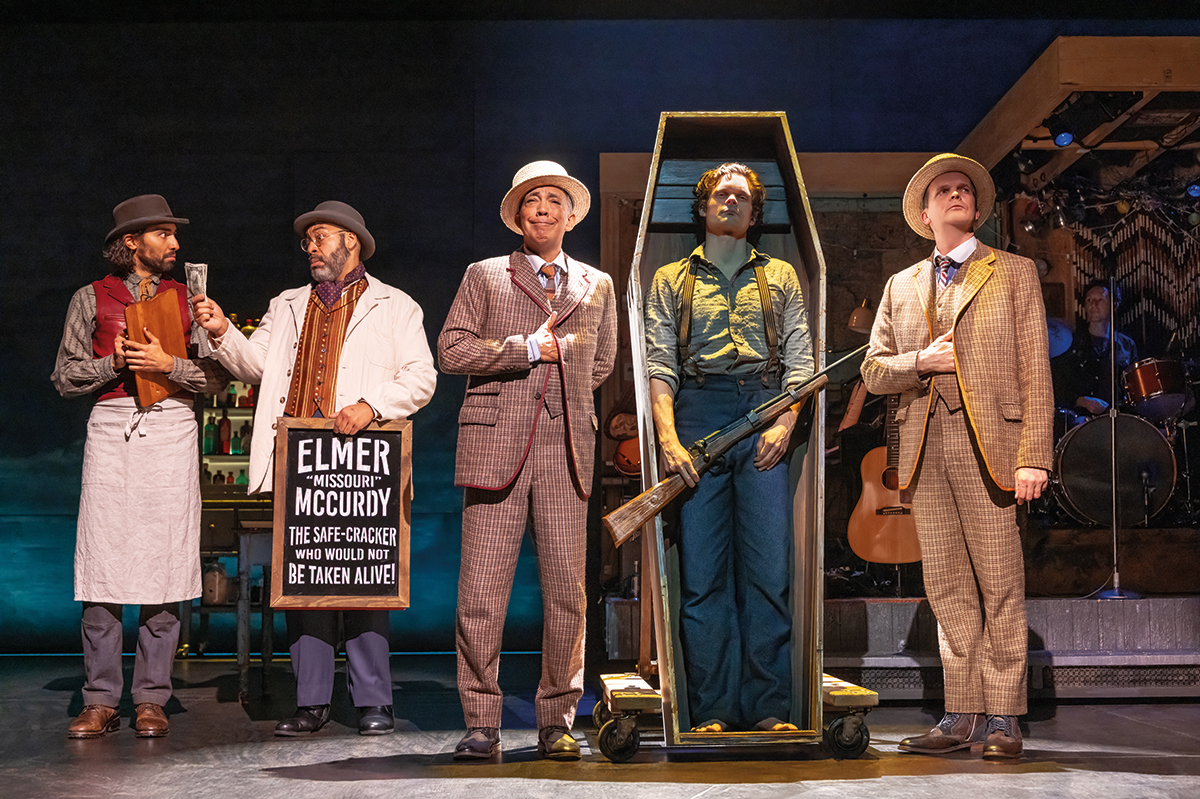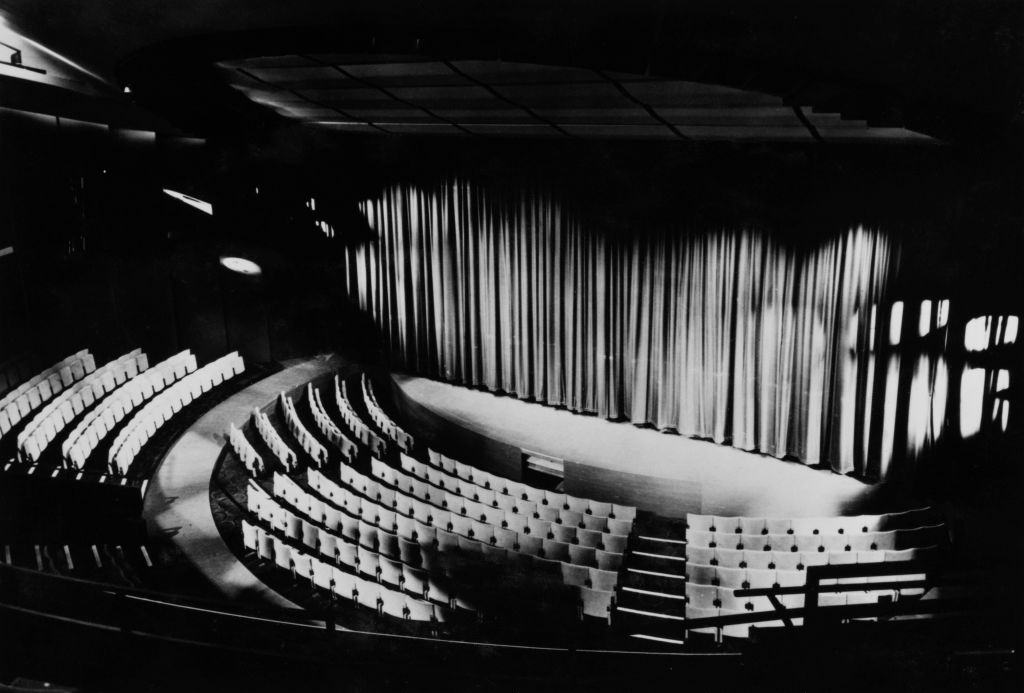As I entered the lobby of Circle in the Square Theatre, now showing Broadway’s hottest ticket, An Enemy of the People, staff were upselling booze.
“Do you want to buy a shot?” offered one enthusiastic barman, waving a bottle of bracing Linie aquavit. He added, grinning: “It’s what the actors drink on stage.”
Sam Gold’s revival of Henrik Ibsen’s didactic and stuffy morality play aims to draw direct comparisons between past and present, including what alcohol we consume (more on that later). In late nineteenth-century Norway, a town finds itself prosperous by selling access to the local spa baths, which supposedly have curative properties.
When Dr. Stockmann (Succession’s Jeremy Strong) discovers that the water is contaminated, he believes that the community will thank him, and initially, at least, he is treated as a hero. But as the financial realities of closing the baths sink in, the populace quickly turns against him. Spearheading the opposition is Dr. Stockmann’s brother Peter, the humorless mayor, and a political animal in the first degree (The Sopranos and White Lotus star Michael Imperioli).
An Enemy of the People first premiered on Broadway in 1895. In this revival, the latest of many, New York-based playwright Amy Herzog adapts the text, cutting the action down to just two hours. At the same time, she updates the language so that it sounds contemporary, deletes entire characters (Dr. Stockmann’s wife, a minor part in the original, is apparently dead) and builds up others: in particular, his daughter, Petra (Victoria Pedretti, of You fame), who not only becomes the most decent player in a dirty game, but is now a feminist figurehead too.
Above all, Gold and Herzog (who are married) Americanize the action. Yes, David Zinn’s graceful costumes are period-appropriate and there are plenty of gorgeous Nordic folk songs sung onstage, mostly during moments of transition. There is also a focus on soothing aesthetics and tactile textures, which emphasize place: the stage is illuminated by gaslights lit by the characters. Roast beef is eaten, hot toddies are mixed, and coffee — painstakingly brewed over a small portable stove — is made, with the steam curling up into the rafters.
But for all this atmosphere, the language itself — and the on-the-nose themes that Herzog has unsubtly emphasized — feel like they could be sourced directly from Twitter/X. The debate at the heart of An Enemy of the People touches on competing claims to the “truth,” while the tension rests on bullying, cancel culture and the stupidity of the mob.
Halfway through, the house lights are turned on for a brief pause. A bar is lowered from the ceiling — blazoned with Linie Aquavit branding — and the audience is invited on stage for shots, as stereos blast “Take on Me” by the Eighties Norwegian synth-pop band A-ha. Mingling with them are the actors, still in nineteenth-century garb, who swig from bottles.
The barman’s sales pitch finally makes sense. This is a production hungry for relevance in the TikTok age. While the audience was instructed not to use phones during the performance, plenty did, and no one stopped them. The intermission moment felt cheap, incongruous, commercial (if it weren’t already obvious, Linie Aquavit is a sponsor). And then — suddenly! — brilliant.
With the house lights still on, the actors call everyone to attention. The bar becomes a platform in a townhall meeting, with audience members left on stage, drafted into the action as spectators to the debate. The fact that Circle in the Square is in the round only adds to the sense of community sparring, which soon becomes violent. (Ice replaces rocks as a weapon, and packets of snacks, also given out during the break, are used to humiliate the fallen Dr. Stockmann, as their sticky contents are scattered over him).
For me, this was both the most daring moment of the night, and the only part that truly managed to break free from a script that veered into a box-ticking exercise.
From there on, the action largely felt flat. Some of the issue lay with the cast, who, while starry, weren’t quite the right fit. In this version, Dr. Stockmann isn’t conceived as vain but as somewhat on the spectrum. Strong’s doctor is eager to please, loves company and wants to do good, but is unable to see how his language upsets people, tenacious in his defense of facts and desperately awkward. It’s a strange and almost tedious depiction, not helped by Imperioli’s Peter who also comes across as monotonous, revealing little inner life or motivation.
The supporting cast is mixed: Pedretti is charming as the dignified Petra, an ambitious schoolteacher; Thomas Jay Ryan is suitably smarmy as the newspaper printer Aslaksen, and Matthew August Jeffers gives a certain delicious bitchy competitiveness to newspaper employee Billing. The newspaper editor, Hovstad, is an apparent progressive who is passionately pro-Dr. Stockmann before changing alliances. Played by Caleb Eberhardt, he feels too much of our time: as if he’d been parachuted in from a craft beer house in Brooklyn.
Herzog was widely praised for her recent adaption of Ibsen’s A Doll’s House starring Jessica Chastain. But in this case, her changes feel a little preachy, and a little obvious, as if the audience couldn’t be trusted to interpret Ibsen’s work, or even to sit through it. I’m not sure, given the liberties Herzog has taken, that this should be called An Enemy of the People, rather than an entirely new play inspired by Ibsen. Even the ending is changed, to make Dr. Stockmann more sympathetic.
During the previews, the climate-change activist group Extinction Rebellion barged into the town hall scene, shouting: “There is no Broadway on a dead planet!” Staying in character, Imperioli manhandled one of the protesters up the stairs. (In an Instagram post, he later wrote: “no hard feelings extinction rebellion crew. michael is on your side but mayor stockmann is not.”)
I wish I had seen the intrusion: that would have felt like a true clash of old and new, an interruption and interpretation to the text that felt bona fide, linking Ibsen’s parable of polluted waters with a larger polluted planet. Watching the footage online, it only made this adaptation of An Enemy of the People feel even blander.
And yet, go — if for nothing else, to experience that ingenious bar scene and the production’s other aesthetic delights. My advice? Join in the fray and take that shot of Linie Aquavit.
This article was originally published in The Spectator’s May 2024 World edition.






















Leave a Reply